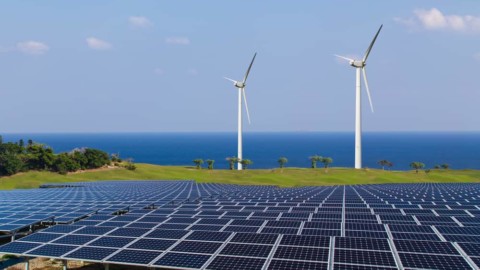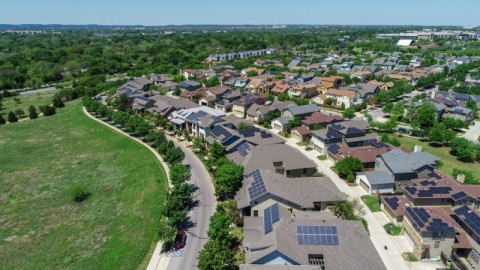by Will Macintosh, Senior Associate, Macpherson Kelley
While there is considerable opportunity for Australia to develop a burgeoning biogas industry, leveraging the significant landfill sites we have around the country, an inappropriate regulatory regime is hampering efforts, writes Will Macintosh.
Australian households and businesses produce 4.3 megatonnes of non-hazardous food waste per year. Alarmingly, 87 per cent of this waste is sent to landfill with only one per cent going to energy from waste facilities.
The continued use of landfill to store food waste presents three problems.
First, and most obviously, it requires the use of land that is tied up for this use for a long period of time.
Second, it requires the use of fossil fuels to transport the waste from where it is generated to the landfill site.
Third, organic waste sent to landfill produces biogas (also known as landfill gas), which contains a high proportion of methane – a flammable greenhouse gas up to 25 times more potent than carbon dioxide. However this gas can be used as a source of energy.
Biogas is produced by the organic process of anaerobic digestion – organic waste decomposes in the absence of oxygen. The natural process of anaerobic digestion occurs regardless of whether a small or large amount of substrate is present. It is, therefore, eminently scalable.
If organic waste which is currently sent to landfill was instead able to be subjected to anaerobic digestion in a controlled manner near the site at which the waste is generated, four key effects would result:
- The land use of landfill would be diminished as the volume of waste presently sent to landfill could drastically decrease
- The contribution of landfill to the greenhouse effect would be diminished as the volume of methane released into the atmosphere from landfill would decrease
- The fossil fuels ordinarily used in transporting such waste to landfill would be saved
- Urban land users could enjoy a renewable energy source for cooking, heating, and power generation
However, the production of a flammable gas within an urban environment necessarily requires an appropriate legal regulatory framework to ensure that potential impacts are managed and safety measures are put in place.
The existing biogas production landscape
The production of biogas, on an industrial level, is not a new concept in Australia.
For example:
- Stanwell Corporation has operated biogas electricity cogeneration plants, using biogas from its Townsville wastewater treatment plants, since 2000
- As at 2012, 55 per cent of Australia’s wastewater treatment plants were producing biogas
- As at July 2018, five Queensland piggeries operated on-premises biogas production facilities
- At the time of writing, 14 anaerobic digestion facilities were registered in Queensland
In March 2018, the Queensland Government announced a number of proposed reforms to the Queensland recycling and waste industry. Underpinning those reforms was the introduction of a proposed levy, imposed at $35 per tonne, on waste sent to landfill.
Following on from this, in April 2018, the Local Government Association of Queensland’s policy executive voted to implement a zero-waste-to-landfill target for its members by 2028, with the target to be underpinned by the implementation of waste-to-energy strategies.
However, with the Queensland Government’s waste to energy commitment appearing to remain aspirational as no further legislative change (other than the introduction of the waste levy) or funding arrangements have since been implemented, the LGAQ has taken the lead in championing the organic waste-to-energy cause.
In July 2018, it commissioned a report which found that anaerobic digestion was the most financially viable energy from waste technology across the state.
Importantly, the LGAQ’s focus has been placed on the establishment five to eight industrial waste from energy facilities but does not extend to waste-to-energy on a small scale in urban environments.
Industrial-scale anaerobic digestion projects are already well-established in Queensland, and there’s clearly an appetite for increasing the use of these facilities.
However, there appears to have been little to no consideration of the implementation of small-scale anaerobic digestion facilities within urban environments in Queensland.
While there do not presently appear to be any documented small-scale urban biogas production facilities in operation in Queensland, a pilot micro anaerobic digestion project commenced in 2013 in the borough of Camden in central London.
A 2017 academic case study confirmed the broad feasibility of the concept.
With the feasibility of small-scale urban projects having been confirmed internationally, Australian authorities should consider similar opportunities here, such as at a household level to power gas burners for cooking or hot water systems, or for multi dwelling developments for heat and power generation. Systems for these purposes are currently available.
Regulatory regime
Unfortunately, the present regulatory regime in Queensland and elsewhere in Australia has been designed to regulate waste to energy on an industrial scale and a) it is not receptive to small-scale urban organic waste to energy applications; and b) it provides significant barriers to entry in the form of at best ambiguous, and at worst overly prescriptive, legislative licensing and safety requirements and provisions of planning schemes which fail to contemplate these applications.
While there must be appropriate safety controls in place to minimise potential adverse impacts, as there must also be an appropriate planning assessment regime in place to ensure orderly development, the significant advantages of biogas production in urban environments are such that its proliferation must be encouraged.
Sensible amendments to the regulatory regime, which appropriately balance the interests of all stakeholders, are available to be implemented.
These include minor amendments to legislation to remove biogas’ classification as “petroleum”, and amendments to planning schemes to properly define small-scale anaerobic digestion as a use and adopting an appropriate development code which applies to that use.
Where to next – bridging the thought leadership gap
Changes to the regulatory regime rarely occur without a compelling industry case or a groundswell of community support. In this instance, there are significant commercial advantages available to the waste management and energy industries if a wide uptake of urban anaerobic digestion is realised.
The waste management industry has the capacity to ensure households properly separate organic waste to enable it to be processed into biogas. The energy industry has the capacity, as has occurred with household solar power, to commercially implement energy production from that biogas.
If a three-way relationship of cooperation is developed between the two industries and households, the industries will cement themselves as key players in, and an integral part of, the emerging circular economy.
In the words of Ricky Bobby from Talladega Nights: “If you ain’t first, you’re last”.

















